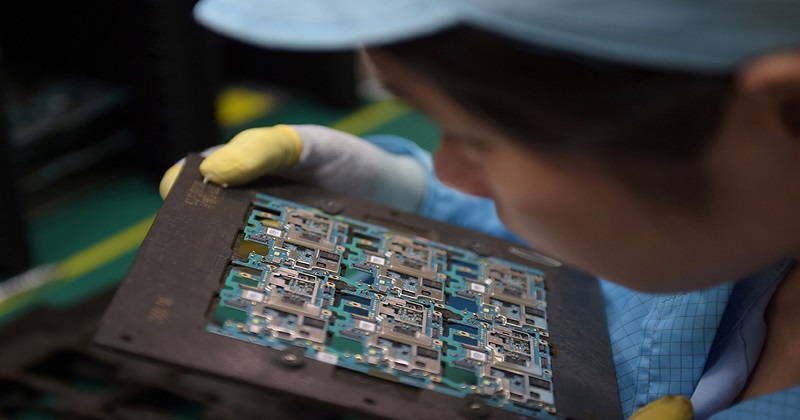
For a long time, China has been the world’s industrial powerhouse, producing everything from smartphones to audio speakers for a wide range of industries. The majority of these items, however, are not of Chinese design but are made to specifications given by more advanced countries. Beijing, on the other hand, wants to alter that and wants to be in the driver’s seat when it comes to deciding on future technology standards. Here’s how it’s going… Ever wonder why, despite the different types of devices available, you can always rely on finding a USB reader to transfer data? The basic solution is industry norms.
To be sure, standards are established and maintained because they facilitate simplicity of operation and interoperability across countries and continents, but it is easy to understand why those with a role in creating these benefit disproportionately. Consider Google’s Android operating system, which runs more than 70% of smartphones globally, and the value it provides to the corporation. Chinese firms are seeking a comparable level of clout in the 5G realm. Making its objectives plain, China has developed its ‘China Standards 2035’ plan for global dominance in new and developing industries such as AI and 5G. And it’s backed up by the rhetoric with hard data.
Chinese corporations, led by Huawei, have given or filed for the most 5G patents. Despite Donald Trump’s efforts to curb China’s edge by blacklisting specific Chinese corporations, analysts say Huawei and other Chinese firms may wind up collecting royalties from their American competitors if they keep their patent advantage. However, standard-setting is a two-way street, and standards are determined with input from a variety of stakeholders, including prominent firms and industry groups. Thus, dominating patents is only one side of the coin, according to industry observers, because it all comes down to patents that are fundamental to commercially successful goods.
How USB became the standard;
The USB Implementers Forum, a non-profit organization located in the United States, established USB port specifications. Five of the seven original members are American corporations, including Intel and IBM. Before USB, gadgets of all kinds had several connection ports. The firms who worked on the USB connection wanted to create a standard protocol that would replace the plethora of alternatives that inhibited interoperability. While it was first introduced in 1996, the USB gained popularity only when Apple made it the only connector on the iMac in 1998, forcing other manufacturers to follow suit, such that it is now the standard connector for a wide range of devices.
Why is the west concerned with CHINA?
While the United States’ approach to standard-setting has been primarily decentralized and market-driven, the Chinese government is making a determined effort to assist its industry. In addition, since Western dominance in standards organizations has faded over time, nearly twice as many Chinese delegates currently hold secretariat positions in the International Organization for Standardisation (ISO) and other organizations as a decade ago. At least four global standards organizations are led by Chinese officials, and the ISO’s top position was held by a Chinese official between 2015 and 2017.
China’s efforts, both past and present: During the 1990s and early 2000s IT boom, China was obliged to embrace international norms. Between 2003 and 2004, China proposed a new wireless LAN standard, WAPI, to compete with the widely used WiFi, but it was stymied by American and European officials. China is becoming more aggressive in proposing new rules, claiming that it is only doing what the West has done in the past by attempting to upend the present regime and benefit from one that is tailored toward its own firms.
A looming cold war: The United States has long been cautious of China’s expanding economic and military prowess, describing the nation as ‘techno-authoritarian’. Despite the fact that Europe-US relations have deteriorated in recent years, Europe remains very much a part of the American bloc. However, China has made inroads into Europe through investing in infrastructure, notably in eastern and southern Europe.
Is China a serious threat? Some scholars argue that Western skepticism of China stems from fundamental mistrust in US-China relations. They argue that China lacks the power and resources to completely outperform the United States. Even though the globe is divided between American and Chinese tech stacks, there is a need for enterprises to collaborate and assure interoperability in order to flourish.
Where’s INDIA now?
India is not very prominent in the ongoing standards cold war, but given the size of its market, it will play a critical role if the globe is divided between American and Chinese blocs. India is closely aligned with the United States and the European Union, and it supplies a lot of critical IT-related services to Western corporations. Affordability, domestic industrial development, and security concerns will be important driving elements as it continues to create its 5G strategy.
However, a parliamentary committee recently stated that India’s 5G implementation is lacking – the 2022 deployment date is rapidly approaching, and the government has yet to sell 5G spectrum. Seven years after its worldwide debut in 2008, 4G was released in India, and the country cannot afford to lose out on the far-reaching benefits that 5G is predicted to offer.

Post Your Comments